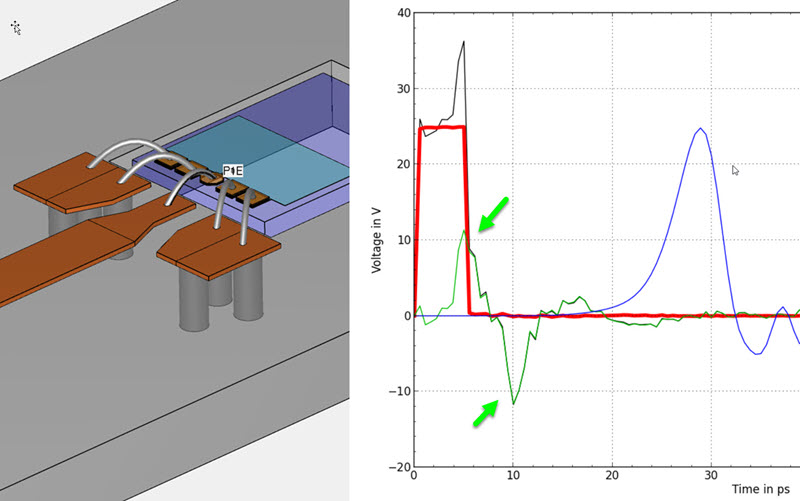In this application note, we will use Empire XPU simulation with time domain results for pulse excitation to understand and optimize the transition from chip to PCB. This method gives detailed insight on the location of discontinuities along the signal path!
Author Archives: muehlhaus
Empire XPU: Choosing a computer hardware
This application note gives some advice on choosing a simulation hardware.
Empire XPU: Choosing a computer hardware
PCB antenna design for real world environments
It is easy to find appnotes with PCB antenna examples, but copying an existing design to your own PCB can result in disappointing performance. In this document, we will have a look at some of these external influences, and their effect on antenna performance.
28GHz RFIC inductor performance vs. ground cutout size
When I published the appnote on filler and ground effect for a 60GHz balun, there were many comments and questions on the ground cutout. It seems that many designers didn’t realize the possible loss in performance from a ground cutout that is too small.
That’s enough reason to adress the issue and a possible solution again in more detail now!
The new testcase, a 500pH octagon inductor designed for 28 GHz, shows a performance loss of 25% in Q factor and 10% reduction in L when adding a tightly spaced ground frame below. This is caused by eddy currents in the closed ground frame. Countermeasures like slots can reduce that effect.
60 GHz on-chip balun transformer
Two new appnotes discuss the design of a 60GHz on-achip balun with 2:1 turn ratio.
Part 1 investigates the 60 GHz balun shape: Interleaved or overlay?
Interleaved or overlay?
Part 2 of the 60 GHz balun application note investigates effect of dummy metall placement on insertion loss.
Dummy metal fill effect
Empire XPU: 3D EM simulation of 240GHz on-chip antenna
This application note describes on-chip antenna modelling with Empire 3D EM.
Empire RFIC EM simulation: 240 GHz on-chip antenna using IHP SG13
Empire XPU: Workflow demo inductor modelling
Inductor Toolkit Generic – Evaluation Version
Inductor Toolkit Generic – Evaluation Version is now available. New in release 2.1: Technology customization is enabled and fully documented, for testing the use of Inductor Toolkit with other RFIC technologies.
Note that this software is only licensed for testing the workflow. Any production use and product development using the evaluation license is not permitted. For product development, a license for the regular product must be purchased!
RFIC Inductor Model Fit now ready for ADS 2017
RFIC Inductor Model Fit version 1.4.0 is now available and compatible with ADS 2017.
Previous versions will not start simulation automatically with ADS 2017, and give an error message “The specified window does not contain a design (no application data). A schematic, symbol or layout window is must be specified.” This issue is fixed with RFIC Inductor Model Fit version 1.4.0
A similar issue is also seen with RFIC Inductor Toolkit on ADS 2017. An update will be available in January 2018.
New phone number
Our office phone number has changed, new number: +49 2302 185 2937

